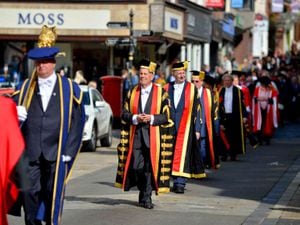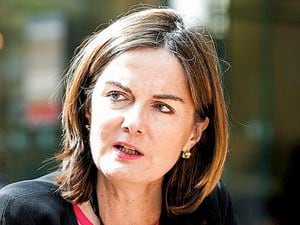Building programme could cost £26.5 million a year in interest repayment by 2030
The ambitious building programme backed by Powys County Council’s ruling Conservative/Independent coalition, could cost £26.5 million a year in interest repayments by the end of the decade.

Liberal Democrat councillors have brought up the issue as a major cause of concern afer the cabinet approved an increase of £1.358 million to complete Ysgol Gymraeg y Trallwng development in Welshpool.
This means that the cost of redeveloping the listed Ysgol Maesydre building in Welshpool into a modern 150 pupil school for Ysgol Gymraeg y Trallwng, and the recently completed new building for Welshpool Church in Wales School will cost over £19 million
In 2017 it was expected that the cost of the projects which have been plagued by issues would cost £13.7 million.
The chairmen of the Audit (Councillor John Morris), Learning and Skills (Councillor Peter Roberts) and Finance Panel (John Brautigam -lay member) have forensically looked at the figures and raised “serious concerns” over costs.
The cost per pupil for these schools they calculate is £61,000 per pupil, compared to the Welsh average cost of £24,000 per pupil for new primary schools.
The building programme also known as capital programmes is set to expand from £323.6 million in 2020/21 to a projected £609.4 million in 2029/30.
Leader of the Powys Liberal Democrat and Green group, Councillor James Gibson-Watt, said; “This is largely being financed with borrowed money and by 2029/30 the cost of servicing that debt will rise from the current £10.5 million to over £26 million per year.
“If these low interest rates rise, those costs will rise further.”
Audit committee member, Councillor William Powell, who is also the party’s Prospective Senedd Election candidate for Brecon and Radnorshire, added: “Many councillors believe this capital programme to be unaffordable.
“No detailed justification for these huge cost increases was presented at the meeting and it was striking that no Cabinet member brought challenge to the officers on the issue.”
“It is vital that Cabinet members maintain an iron grip on these capital costs. which frankly threaten to drive more well-above inflation Council Tax rises over the coming years.”
A letter has been sent to cabinet members from the Finance Panel which outlines their worries.
It says that the council has now borrowed £305 million which is 13 per cent more than the actual council’s budget of £270million.
They believe that servicing the debt which costs £10 million this year, will jump to £20 million by 2023 and to £26.5million at the end of the decade.
The panel believed that the Covid crisis has been “fortunate” in causing delays in projects which could see changes to the programme made.
The letter ends: “It is the panel’s concern that substantial changes to the capital programme it’s funding sources would be necessary to make it affordable in future years,.”
A PCC spokesman said: “The council’s Capital Strategy and Capital Programme provide a high-level, long-term overview of how the council will manage its assets and invest in programmes such as the Schools, Highways, Housing and other key projects.
“It enables the council to look at its priorities and potential investment plans and consider the impact on service provision, achievement of its objectives and financial affordability.
“The programme and strategy are reviewed and re-profiled on an annual basis and includes some assumptions about longer term costs and how these will be financed.”
They add that a revised capital strategy for 2021-22 is due to be published next week.





